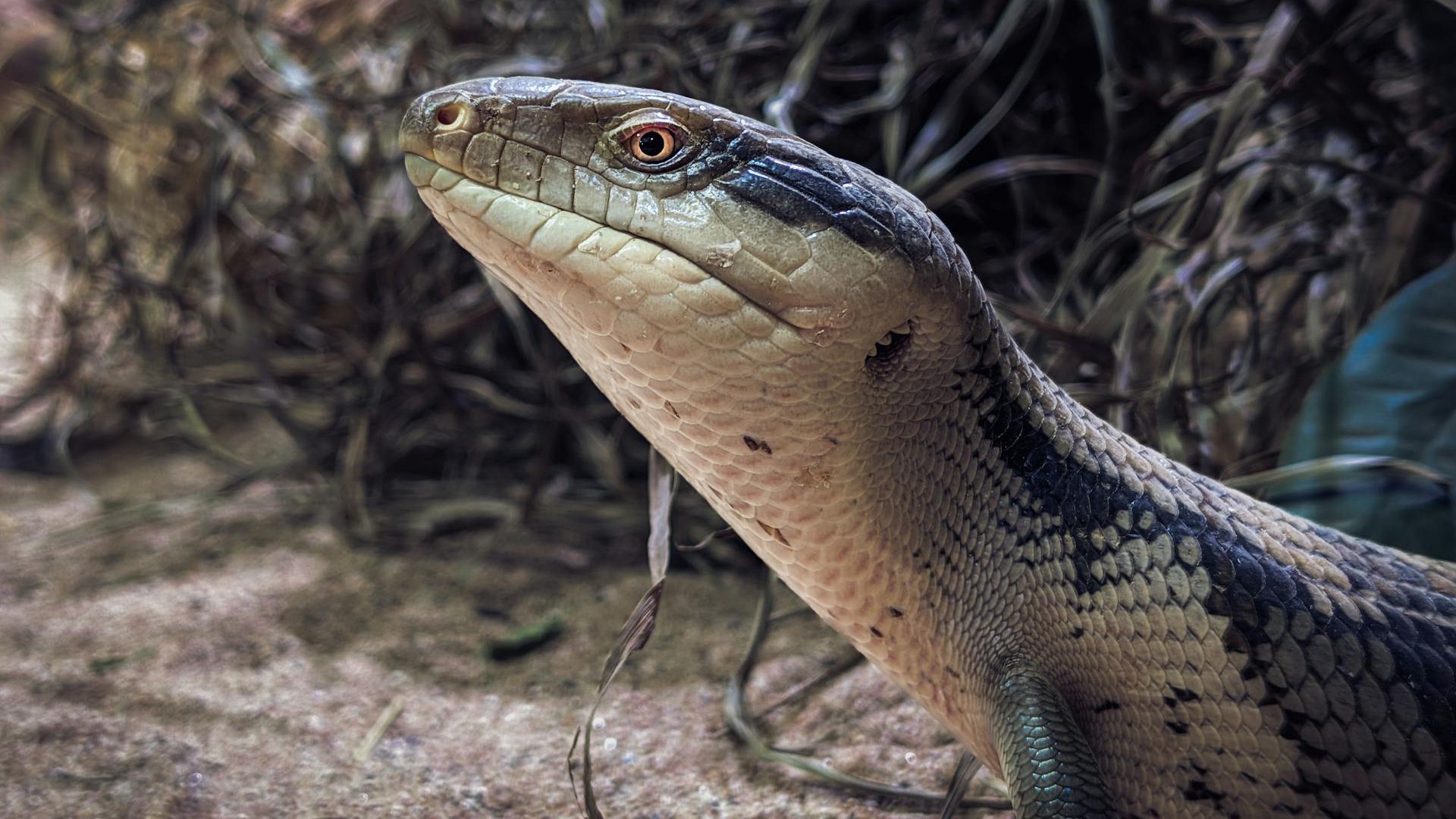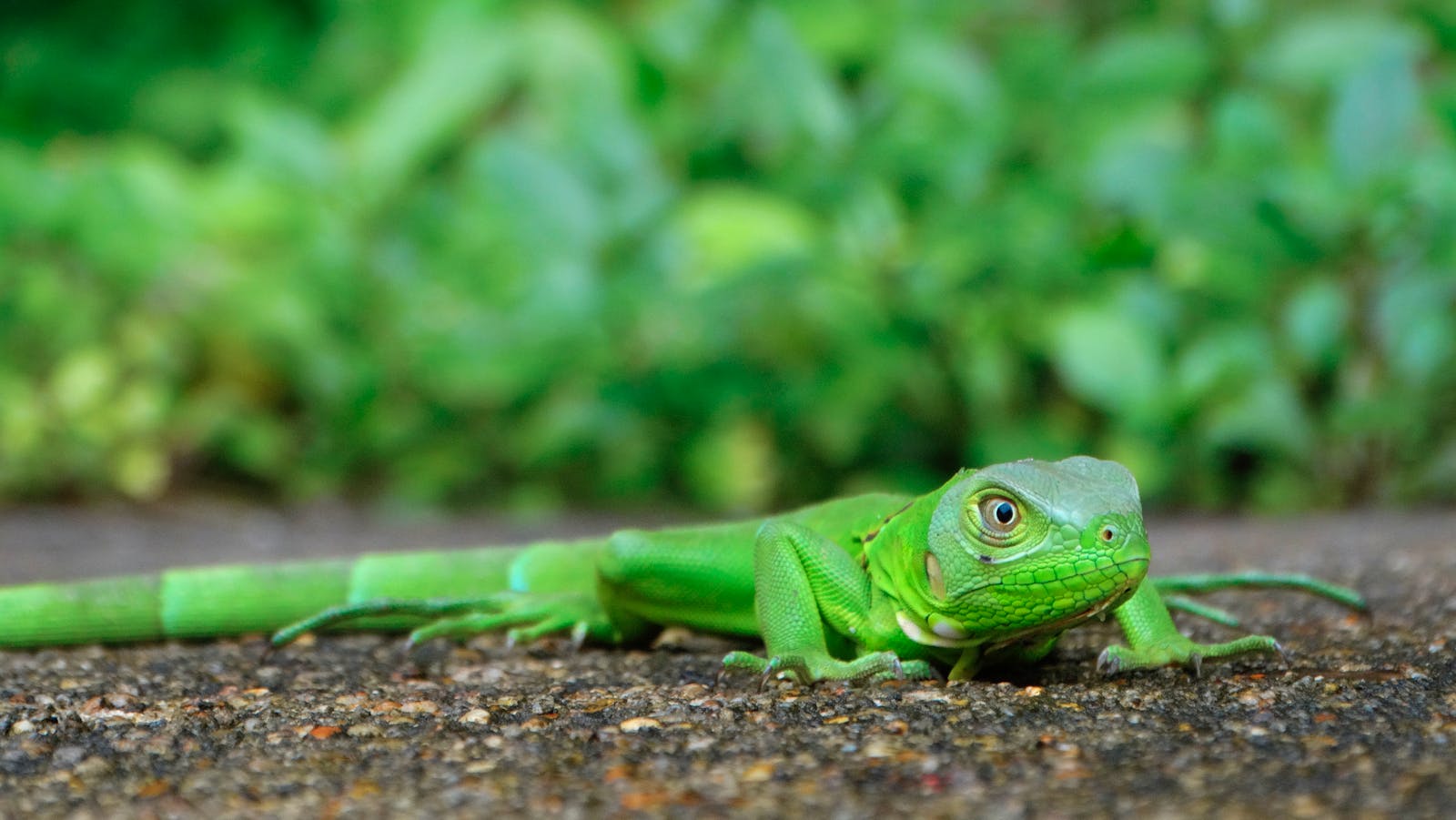In the vast tapestry of Earth’s biodiversity, certain creatures exist on such a precarious edge that they’ve become living ghosts, rarely seen and teetering on the brink of oblivion. Among these are several lizard species so critically endangered that each individual represents a precious fraction of their remaining genetic legacy.
Unlike their more common relatives that bask on rocks in backyards or scurry through popular nature documentaries, these rarities remain largely unknown to the public eye.
Their stories, however, are compelling testimonies to both the fragility of life and the devastating impact of human activities on specialized species.
From remote islands to isolated mountain ranges, these remarkable reptiles cling to existence against mounting odds, with some populations reduced to mere dozens of individuals in the wild.
The Bizarre Blue Iguana of Grand Cayman
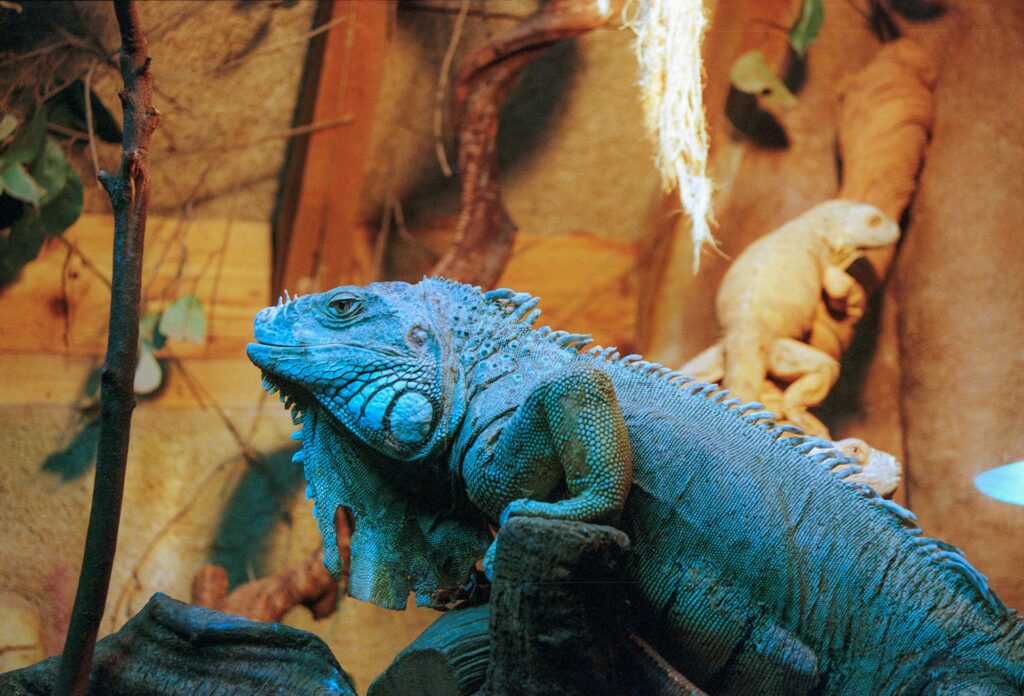
The Grand Cayman blue iguana (Cyclura lewisi) stands as one of the most remarkable conservation comeback stories among critically endangered lizards.
With their striking turquoise coloration that intensifies during breeding season, these massive lizards once numbered fewer than 25 individuals in the wild in 2002, making them among the rarest lizards on Earth.
Native exclusively to Grand Cayman Island, these prehistoric-looking creatures can grow up to 5 feet long and live for over 60 years in optimal conditions.
Their precipitous decline resulted from habitat destruction, vehicle strikes, and predation by introduced dogs, cats, and rats that devastated their population.
Through intensive conservation efforts, including a captive breeding program at the Blue Iguana Conservation facility, their numbers have increased to over 1,000 individuals today—though they remain critically endangered and vulnerable to rapid development across their island home.
The Mysterious Guatemalan Beaded Lizard
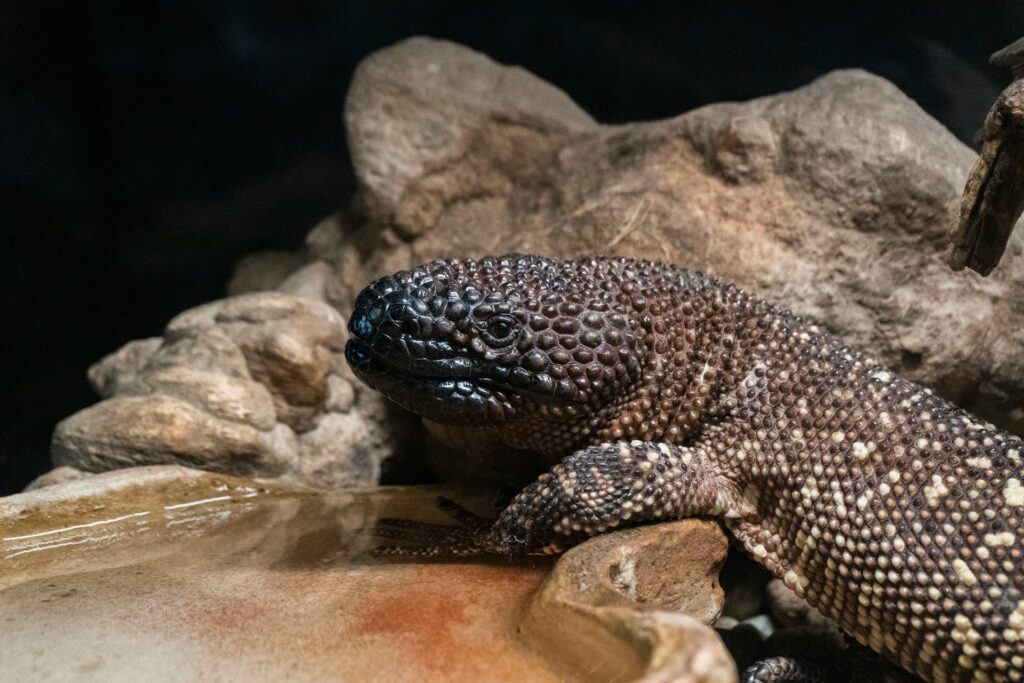
Lurking in the dry forests of Guatemala’s Motagua Valley exists one of the world’s most enigmatic and threatened lizards—the Guatemalan beaded lizard (Heloderma charlesbogerti).
Discovered only in 1984 and named after zoologist Charles Bogert, these venomous relatives of the Gila monster now number fewer than 200 individuals in the wild.
Their distinctively patterned bodies feature beadlike scales in shades of black and yellow, creating a striking appearance that unfortunately makes them targets for the illegal pet trade.
Unlike many lizards, beaded lizards give birth to live young rather than laying eggs, producing just 2-4 offspring every other year—a low reproductive rate that hampers population recovery.
The species faces multiple threats, including severe habitat fragmentation, as local communities convert their dry forest habitat into agricultural land, particularly for melon and tobacco plantations.
The Vanishing Cabo Verde Giant Skink
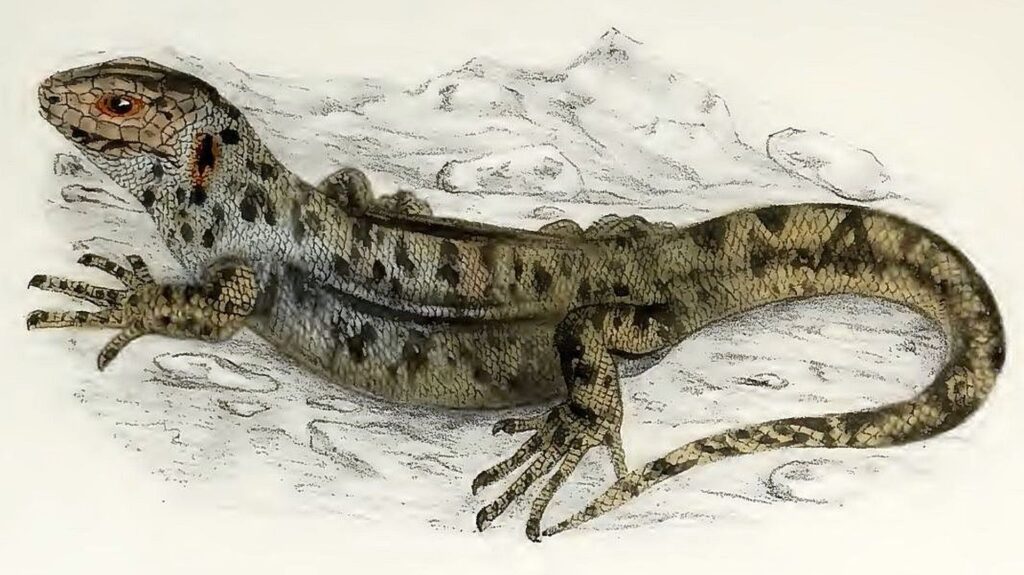
The Cabo Verde giant skink (Chioninia coctei) represents one of the most tragic tales of lizard extinction—or near extinction—in recent history.
Last documented in 1912, this large skink native to the isolated Branco and Raso islets of Cabo Verde was officially declared extinct until tantalizing reports in 2005 suggested a few individuals might still survive in remote crevices.
Growing up to 16 inches long, these robust lizards had adapted perfectly to their harsh, dry island environment over millions of years of evolution.
Their presumed extinction resulted from predation by introduced rats, cats, and other invasive mammals that invaded their island sanctuary.
Several expeditions have searched for surviving populations in recent years, but scientific consensus now leans toward their complete disappearance, though some biologists maintain hope that an undiscovered population might still persist in unexplored areas of the rugged islands.
The Elusive Union Island Gecko

The Union Island gecko (Gonatodes daudini) embodies the concept of extreme rarity, with its entire global population restricted to just a few acres of forest on Union Island in St. Vincent and the Grenadines.
Discovered only in 2005, this diminutive lizard measures barely more than an inch long but displays stunning coloration, with males featuring vibrant green patterns against a dark body that makes them among the most visually striking geckos on Earth.
Their total wild population is estimated at fewer than 10,000 individuals, all confined to a single forest patch smaller than 100 hectares.
The species faces imminent threat from illegal collection for the exotic pet trade, where individual specimens have been sold for thousands of dollars in European and Asian markets.
Conservation organizations and local authorities established the Union Island Environmental Attackers to protect the remaining habitat and patrol against poachers who could potentially capture enough individuals in a single night to impact the species’ future.
The Forgotten Leaf-Toed Gecko of Desecheo
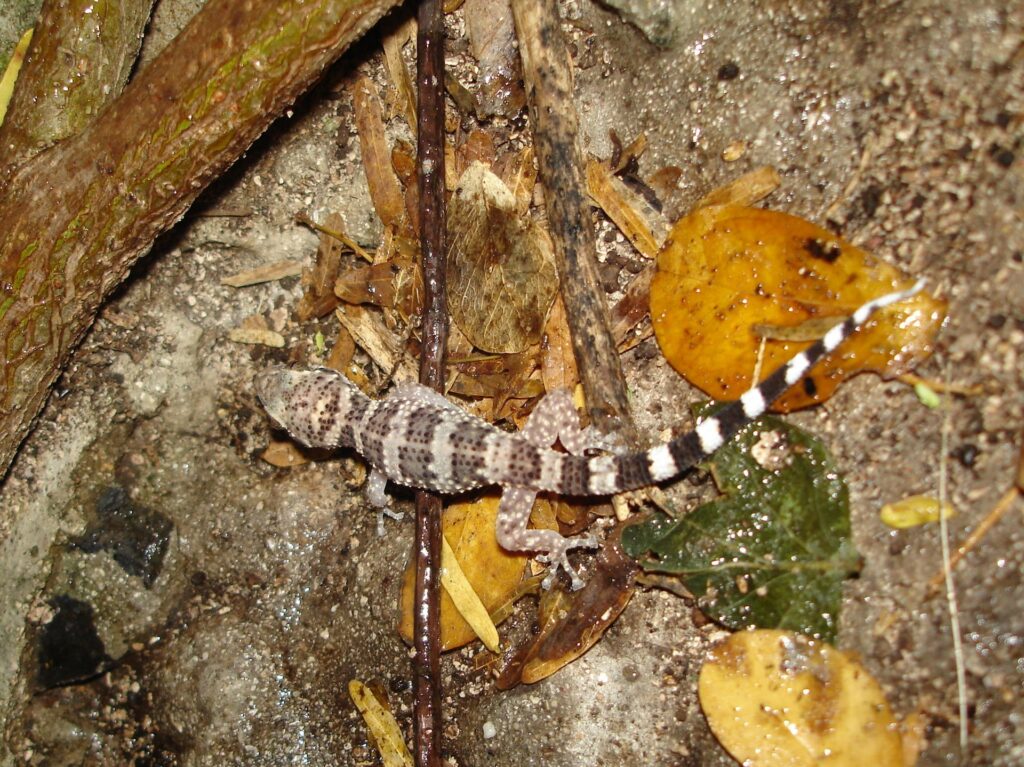
The Desecheo Island leaf-toed gecko (Phyllodactylus wirshingi) represents one of the most precarious existences among all lizard species, surviving only on the tiny Desecheo Island off Puerto Rico.
This rarely seen nocturnal gecko has not been officially documented since the 1990s, leading some researchers to fear it may already be extinct.
The species evolved in isolation on its small island home, developing specialized adaptations for climbing the unique vegetation of the dry forest ecosystem.
Its decline coincided with military activities on the island, including bombing exercises, followed by the introduction of invasive rats and rhesus monkeys from a former research facility that preyed upon the geckos and destroyed their habitat.
Recent intensive conservation efforts have focused on removing these invasive species, offering a glimmer of hope that if any individuals remain undiscovered in remote parts of the island, they might have a chance at recovery without these introduced predators.
The Imperiled Psychedelic Rock Gecko
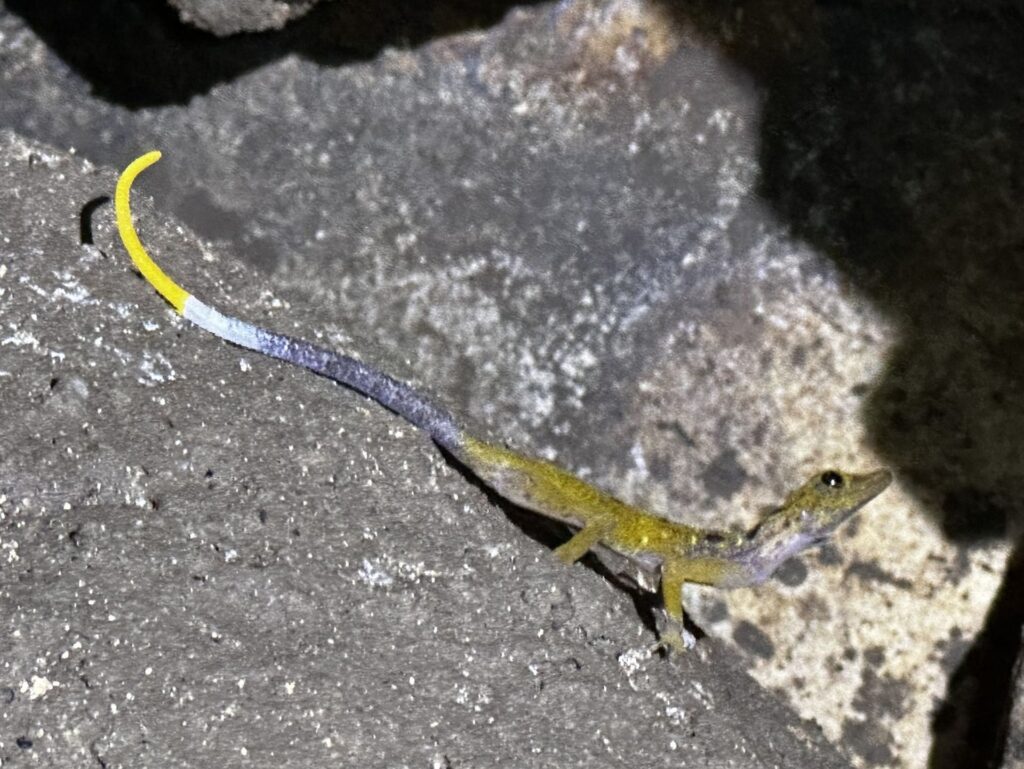
The psychedelic rock gecko (Cnemaspis psychedelica) captivates with its extraordinary appearance, featuring vibrant orange speckles and blue-gray eyes that seem almost artificial in their intensity.
Discovered in 2010 and restricted entirely to Hon Khoai Island off southern Vietnam, the species inhabits less than 8 square kilometers of granite boulders and forest.
With fewer than 500 individuals estimated to remain, the gecko faces extraordinary pressure from collectors seeking rare specimens for the illegal pet trade.
Their limited range makes them particularly vulnerable to climate change effects, including sea level rise that could eventually submerge portions of their small island habitat.
Vietnamese authorities have implemented strict protections for the species, but enforcement remains challenging on the remote island, and wildlife trafficking networks continue targeting the species due to its high value in underground pet markets across Asia and Europe.
The Solitary Survivor: Bermuda Rock Lizard
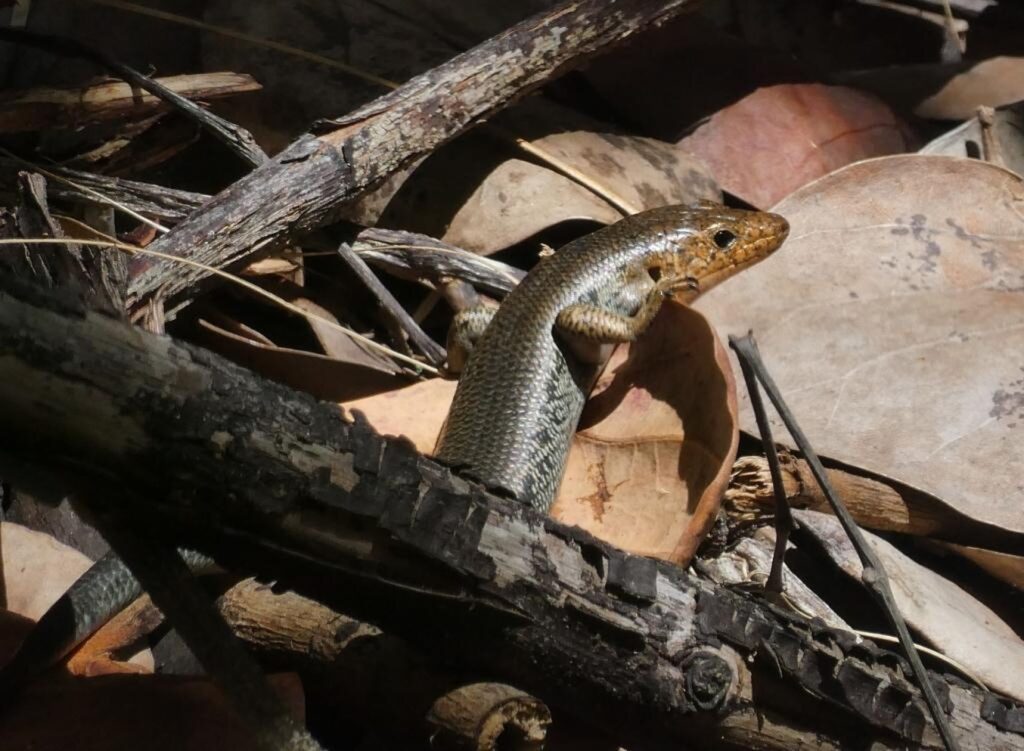
The Bermuda rock lizard (Plestiodon longirostris), also known as the Bermuda skink, represents one of the only endemic terrestrial vertebrates on the isolated Bermuda islands and now stands on the precipice of extinction.
Fewer than 2,500 mature individuals remain, scattered across fragmented limestone rock outcroppings and coastal areas.
These bronze-colored lizards with distinctive orange markings on their faces have inhabited Bermuda for approximately 400,000 years but now face a gauntlet of threats that have decimated their numbers.
Their decline stems from a perfect storm of habitat destruction from resort development, predation by introduced anoles and kiskadee flycatchers, and fatal encounters with human garbage—particularly glass bottles where they become trapped while hunting insects.
Conservation efforts include captive breeding programs at the Chester Zoo in England and habitat restoration projects on several small islands where invasive predators can be managed.
The Last Dragons of Komodo’s Lesser Cousins
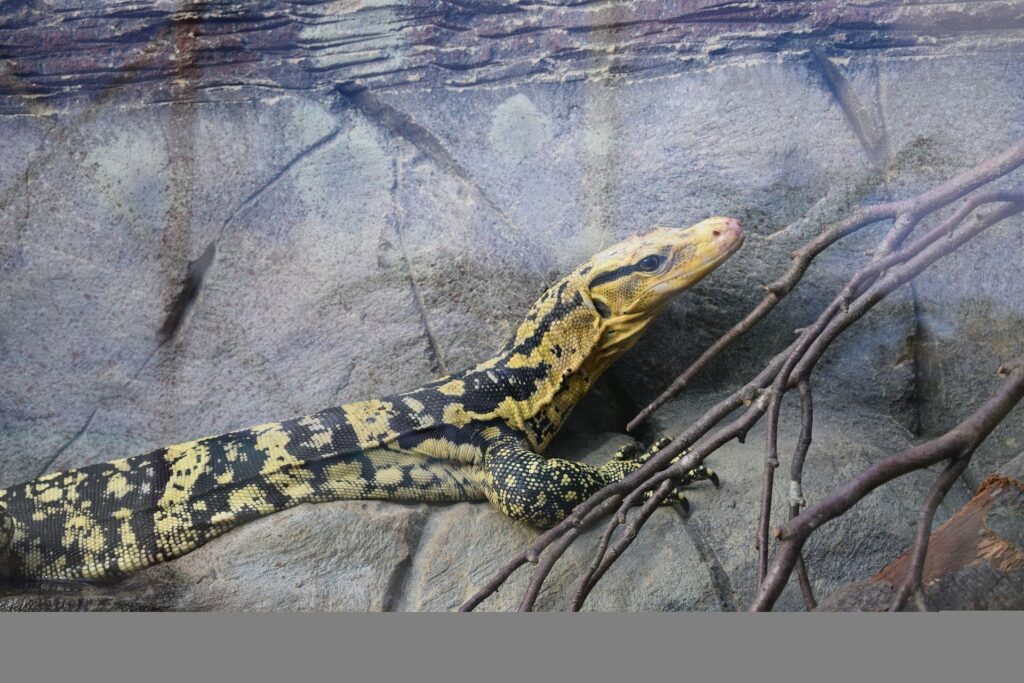
While the Komodo dragon maintains relative stability, its lesser-known relative, the Yellow-headed monitor (Varanus cumingi), faces a much more uncertain future on the islands of the southern Philippines.
With populations estimated at fewer than 3,000 individuals, these impressive predators grow up to four feet long and display striking yellow markings across their head and neck that give them their common name.
Unlike their more famous Komodo cousins, these monitors face intense hunting pressure for their skin, which is used in traditional drums, and their meat, which is considered a delicacy in some regions.
Habitat fragmentation has isolated populations on different islands, reducing genetic diversity and making them vulnerable to catastrophic events.
Conservation efforts have been hampered by political instability in parts of their range, though new initiatives for community-based protection programs show promise in engaging local populations in safeguarding remaining monitor populations.
The Strange Case of the Christmas Island Forest Skink
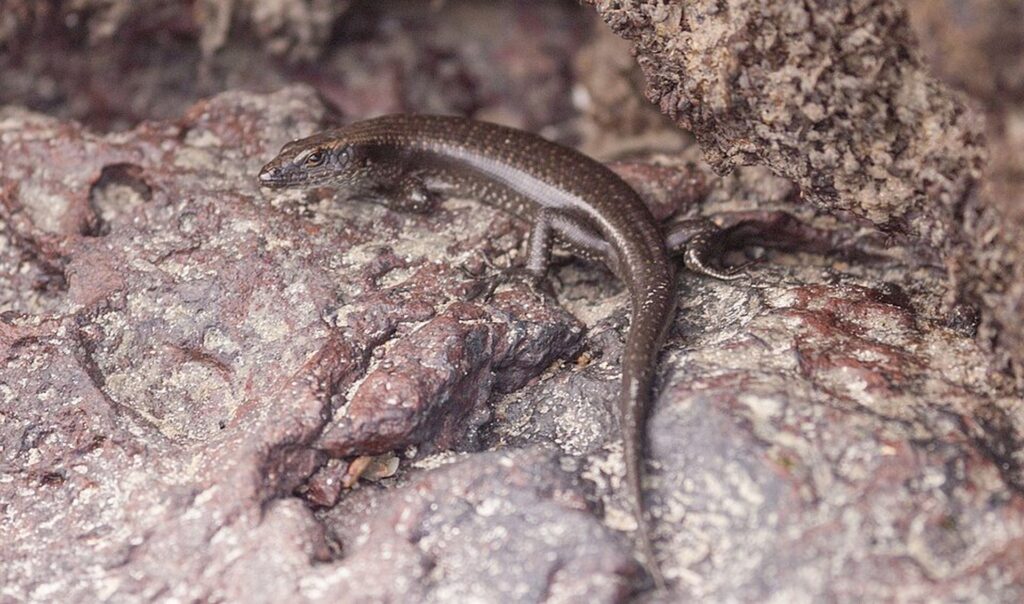
The Christmas Island forest skink (Emoia nativitatis) represents one of the most recent confirmed extinctions among lizard species, with the last known individual, affectionately named “Gump,” dying in captivity in 2014. Once abundant across
Christmas Island, this medium-sized lizard with a copper-brown body and distinctive pale stripe along its side declined rapidly after the accidental introduction of the yellow crazy ant and the wolf snake to the island ecosystem.
Despite intensive surveys of remaining forest habitat, no individuals have been detected since Gump’s death, marking the first documented extinction of a lizard species in Australia.
The species’ disappearance serves as a stark warning about the devastating impact of invasive species on island ecosystems, where native wildlife often lacks evolutionary defenses against new predators.
Conservationists point to the Christmas Island forest skink as a cautionary example of how rapidly species can be lost, even when decline is noticed and emergency measures attempted.
The Peculiar Paroedura Masobe of Madagascar
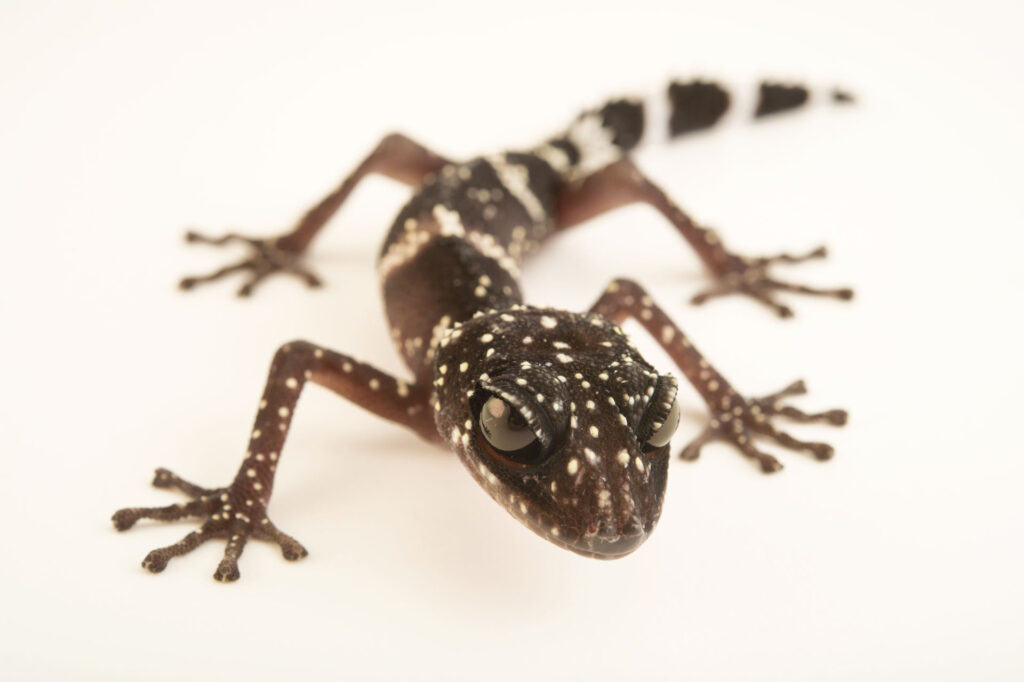
The Paroedura masobe, commonly known as the Masobe gecko, represents one of Madagascar’s most unusual and threatened reptiles, with fewer than 250 mature individuals estimated to remain in the wild.
Endemic to a tiny fragment of eastern Madagascar’s rainforest smaller than 8 square kilometers, these large nocturnal geckos possess extraordinary adaptations, including leaf-like patterns and textures that create nearly perfect camouflage against moss-covered trees.
Their specialized diet consists primarily of large insects and small vertebrates that they hunt using ambush tactics in the forest canopy.
Deforestation for agriculture, illegal logging, and slash-and-burn practices have devastated their already restricted range, while collection for the exotic pet trade removes valuable breeding adults from the wild population.
Conservation efforts include strict protection of their remaining habitat within the Andasibe-Mantadia National Park and attempts to establish assurance colonies in zoos, though breeding success in captivity has been limited.
The Disappearing Act of the La Palma Giant Lizard
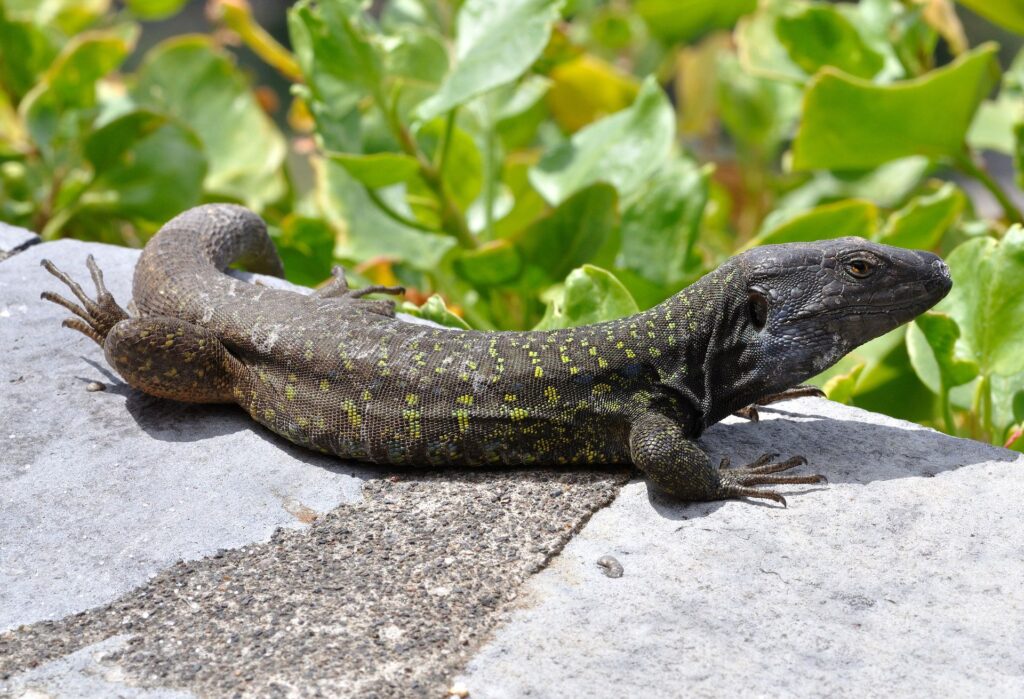
The La Palma giant lizard (Gallotia auaritae) was long considered extinct until its astonishing rediscovery in 2007, after disappearing from scientific records for over 500 years.
Native exclusively to La Palma in Spain’s Canary Islands, these impressive lizards can grow to nearly two feet in length and were once a dominant species across the island before human colonization.
Their near-extinction resulted from predation by introduced cats, rats, and dogs, combined with habitat destruction as the island’s unique laurel forests were cleared for agriculture.
Current population estimates suggest fewer than 100 individuals survive in extremely remote cliff areas that remain inaccessible to introduced predators.
Recovery efforts include a captive breeding program at the La Palma Giant Lizard Recovery Center, habitat restoration initiatives, and predator control in key areas where release of captive-bred individuals might eventually be possible.
The Last Stand of the Utila Spiny-Tailed Iguana
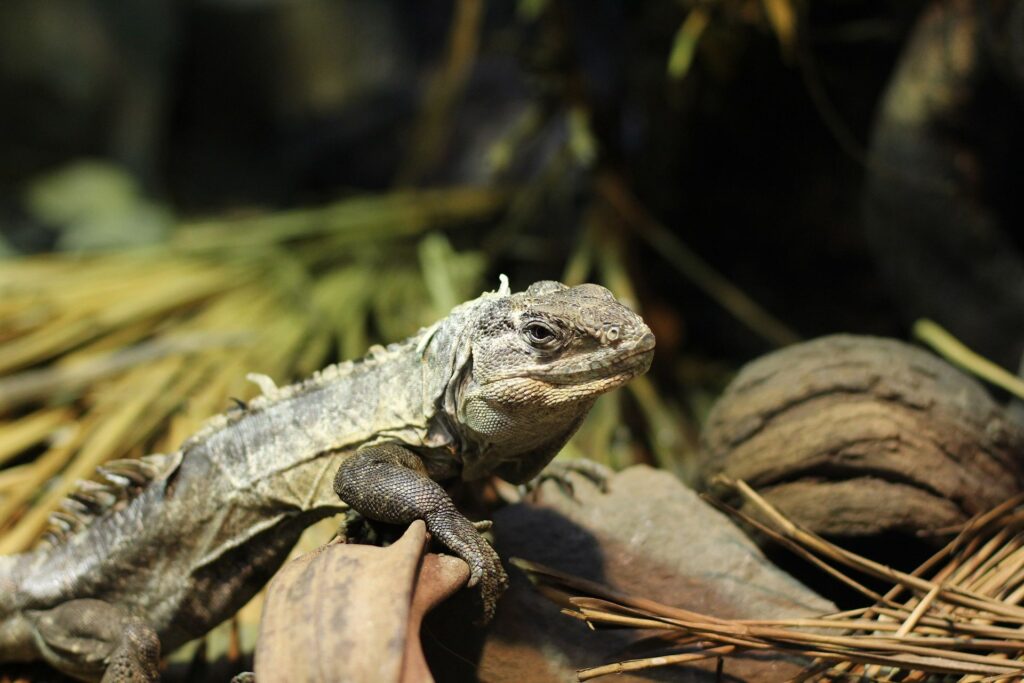
The Utila spiny-tailed iguana (Ctenosaura bakeri), locally known as “Swamper,” represents one of the world’s most geographically restricted lizard species, found only in the mangrove swamps of Utila, a small island off Honduras that measures just 11 square kilometers.
With a population estimated at fewer than 10,000 individuals and declining, these uniquely adapted iguanas have evolved specialized behaviors for living in mangrove environments, including excellent swimming abilities and salt-tolerant physiologies.
Their mangrove habitat faces rapid destruction for tourism development, with Utila becoming increasingly popular among international travelers seeking affordable Caribbean destinations.
Additionally, local consumption of the iguanas and their eggs as a traditional food source continues despite legal protections, with “Swamper” considered a delicacy and erroneously believed to have medicinal properties.
Conservation organizations, including the Iguana Specialist Group, have established the Utila Iguana Research and Breeding Station to protect the remaining population through habitat conservation, education programs, and controlled breeding efforts.
Conservation Challenges and Hope for the Future
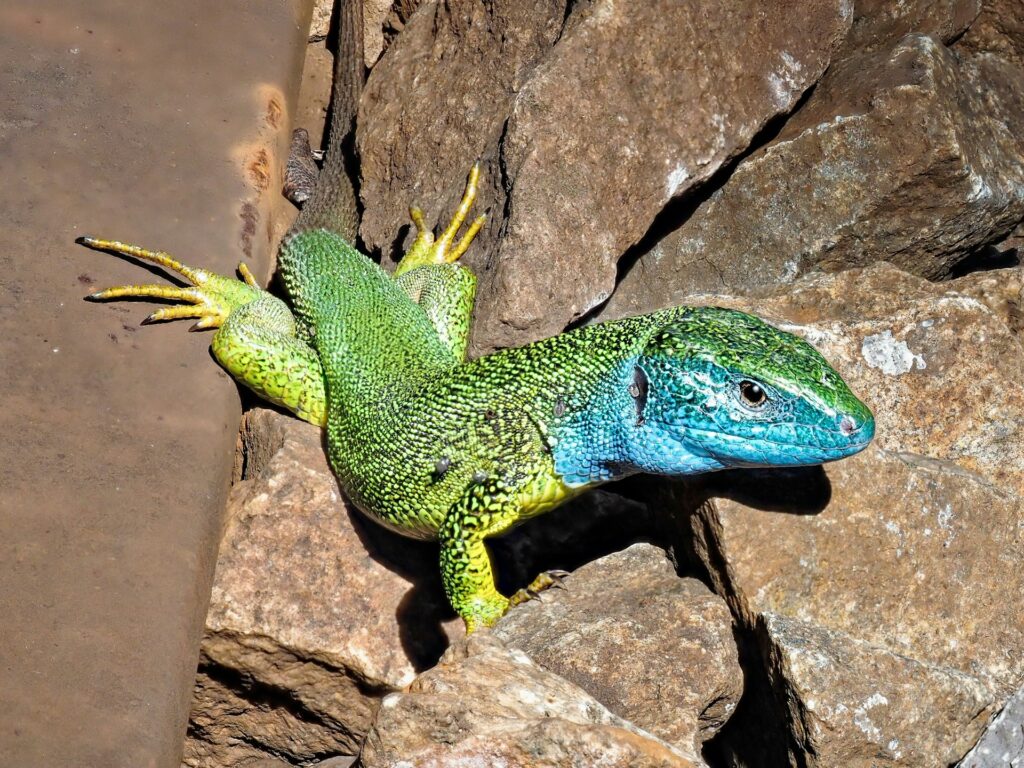
The conservation of the world’s rarest lizards presents unique challenges that require multifaceted approaches beyond traditional protected area designations.
Island species in particular face compound threats from invasive predators, limited genetic diversity, and vulnerability to stochastic events like hurricanes that can devastate entire populations in a single incident.
Climate change poses an existential threat to many critically endangered lizards, with rising temperatures potentially skewing sex ratios in species with temperature-dependent sex determination and increasing sea levels threatening low-lying island habitats.
Despite these challenges, success stories like the Grand Cayman blue iguana demonstrate that coordinated conservation efforts combining habitat protection, captive breeding, invasive species management, and community engagement can reverse the trajectory toward extinction.
Emerging technologies, including environmental DNA testing, which can detect species presence from water or soil samples, offer new hope for monitoring extremely rare species, while advances in genomic research provide tools for understanding genetic diversity and guiding breeding programs to maximize adaptive potential in remnant populations.
Conclusion
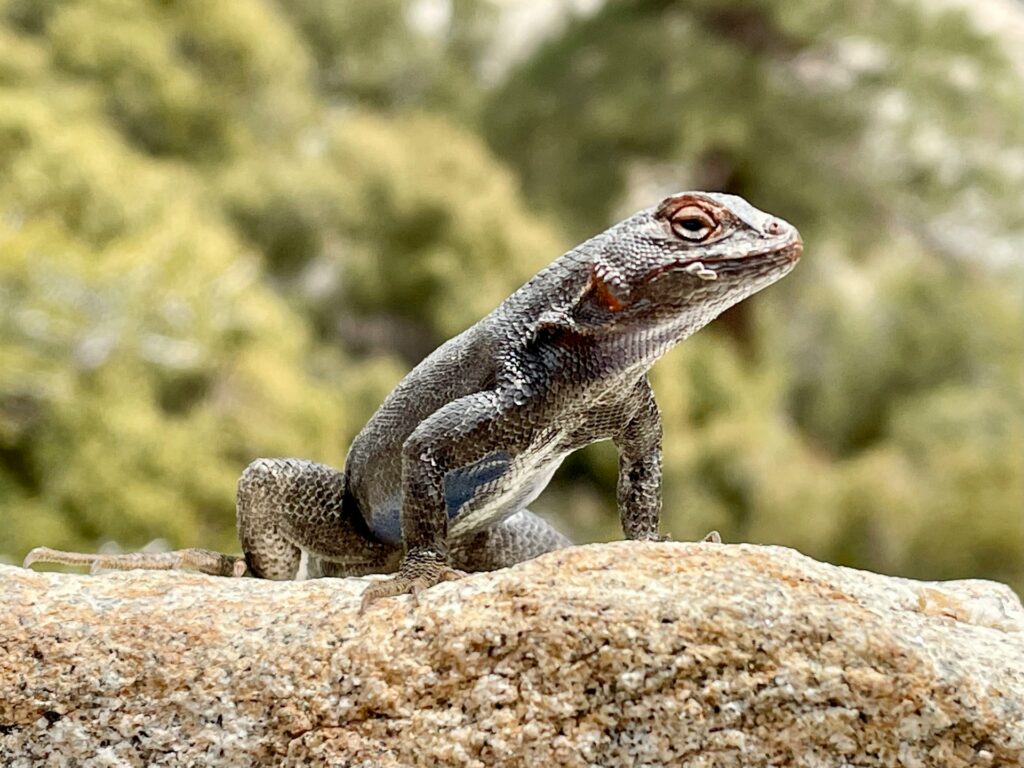
As these magnificent reptiles hover on the brink of extinction, their fate rests largely in human hands.
The loss of any of these species would represent not just the disappearance of unique evolutionary lineages but also the unraveling of ecological relationships developed over millions of years.
Through continued research, dedicated conservation funding, and public awareness, there remains hope that these living jewels of evolution might persist long into the future, reminding us of both our responsibility toward Earth’s biodiversity and the remarkable capacity for survival that defines life on our planet.



